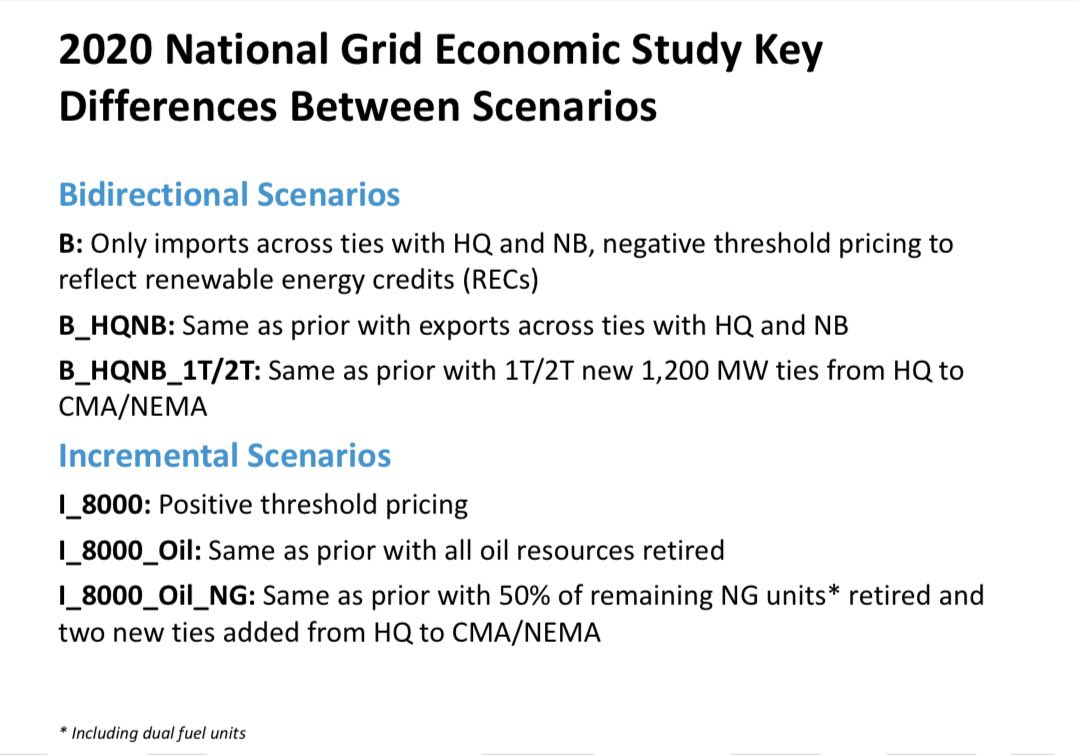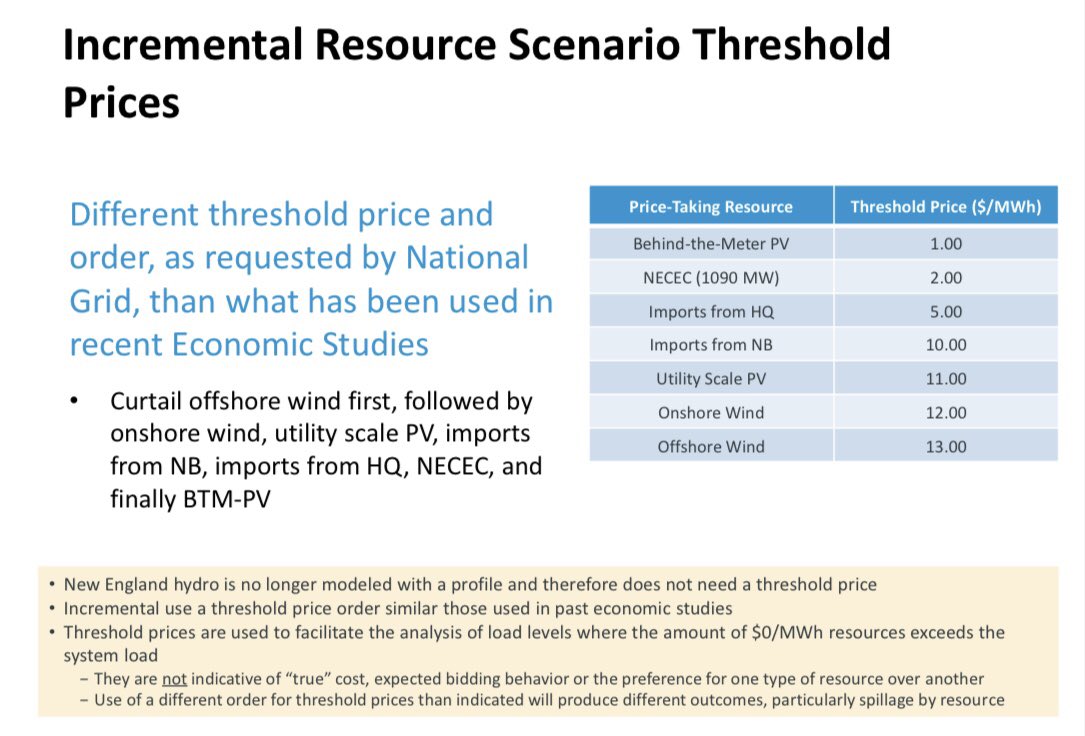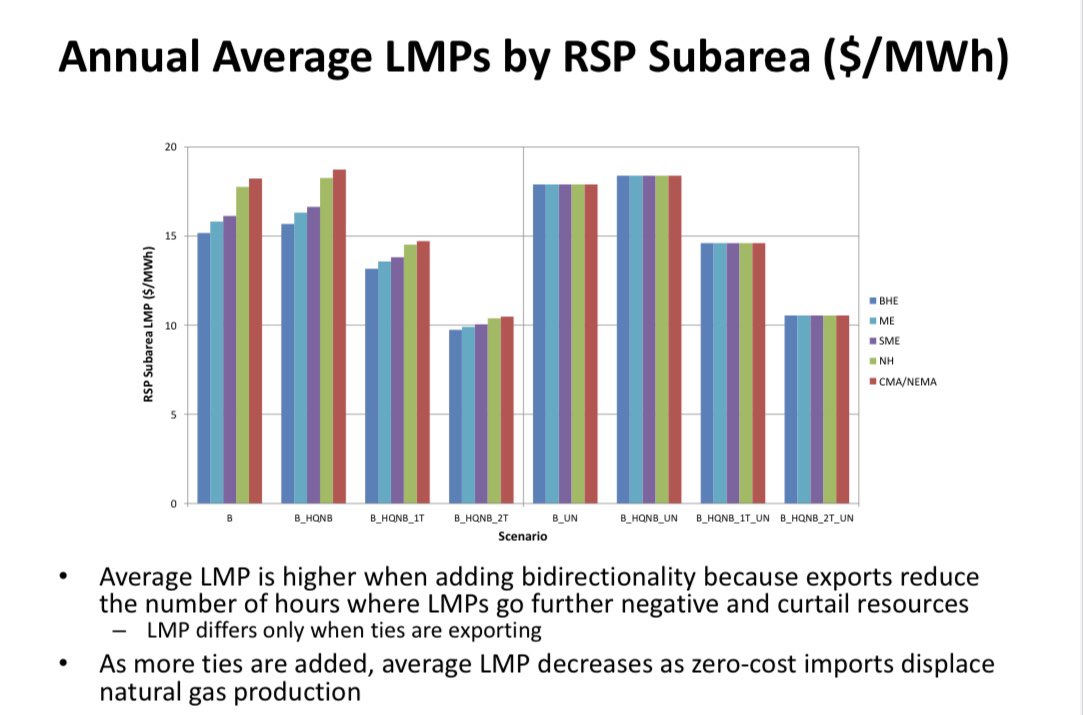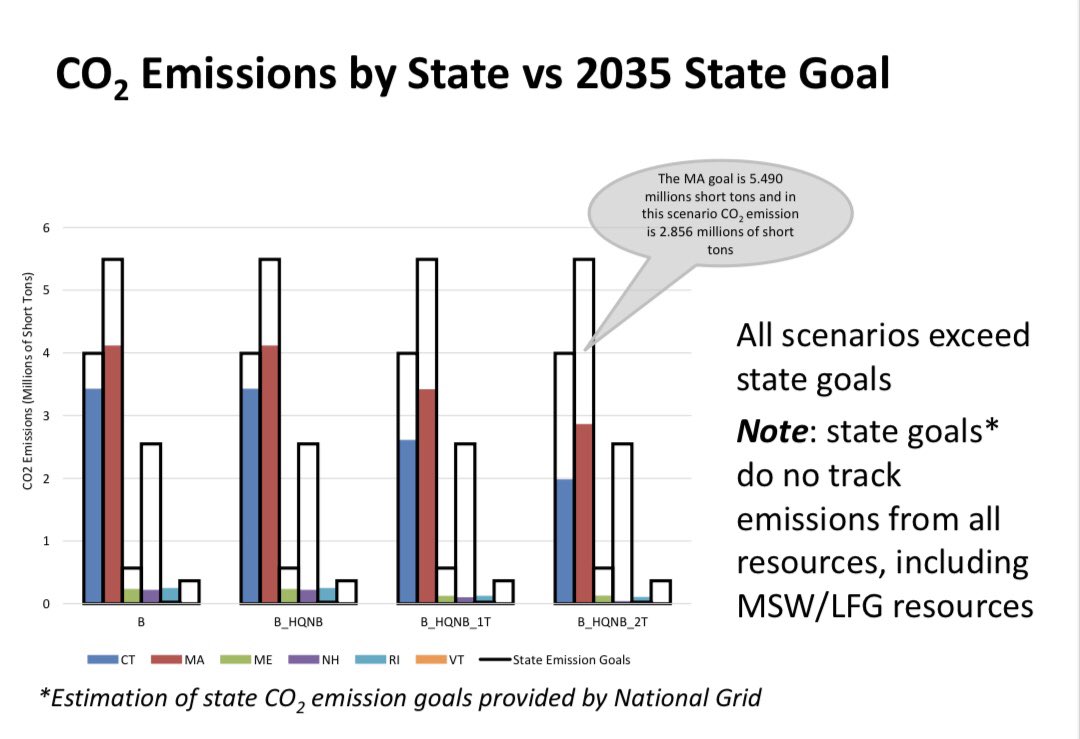1. @isonewengland has a new URL/page for completed economic studies. ( http://bit.ly/3mjHh1j ) The page also has info re pending studies, incl. one examining the bidirectional use of ties w/NY, NB, & HQ to minimize “spillage” & reduce FF gen. during peak hours.
It’s promising.
It’s promising.
2. @nationalgridus requested the study to “[p]rovide stakeholders analyses of potential pathways to best use the MWh of clean energy resources to meet state goals cost-effectively, leveraging
transmission and/or storage as needed.”
transmission and/or storage as needed.”
3. An 11/18/20 draft of the study can be found at the ISO-NE Planning Advisory Committee page ( https://bit.ly/39nz5Yc ).
The study focuses on 2035 and assumes a range of scenarios. These include the complete retirement of oil generation, & 50% retirement of gas generation.
The study focuses on 2035 and assumes a range of scenarios. These include the complete retirement of oil generation, & 50% retirement of gas generation.
4. The 2020 NGrid study includes significant changes to assumptions made in a 2019 economic report requested by @NESCOEStates: it incr. aggregate load to 187 TWh; incr. solar production to 20 TWh; incr. heat pump & EV load to 16 TWh; & incr. wind production to 39 TWh.
5. The study assumes that bi-directional threshold prices reflect the value of RECs. This results in the curtailment of imports first, then the commencement of exports, and renewable curtailments only when export capacity has been exhausted.
6. The study also uses different resource threshold prices and order than those used in previous economic studies. This results in the curtailment of offshore wind first, then onshore wind, then utility scale PV, then imports from NB, imports from HQ, & NECEC, and finally BTM-PV.
7. Under all of the study’s scenarios “spillage” of off- and onshore wind (non-use of production capacity) is dramatically reduced. That is, bi-directional (import/export) ties can maximize the amount of wind generation used to satisfy NE-ISO load.
8. As more ties are added, average locational marginal prices (LMPs) decrease as zero-cost imports displace natural gas production. More ties equate to greater savings for consumers.
9. Additional system ties also reduce the cost of producing energy system-wide across ISO-NE by as much as 25%. That is predicted to reduce the cost of energy for utilities (load serving entities) in turn by up to ⅓.
10. But perhaps the most dramatic effect increased regional interconnection ties have is boosting the efforts the 6 New England states are making to meet their ambitious climate goals: ALL of the economic study’s scenarios *exceed* state emission reduction goals.
11. It’s clear increasing @isonewengland’s interconnections to NY & Canada should be a cornerstone of state energy policy b/c of the clear benefits: higher %s of renewable energy on the grid, reduced energy cost for consumers, & success meeting state climate goals.
#mapoli
###
#mapoli
###

 Read on Twitter
Read on Twitter










